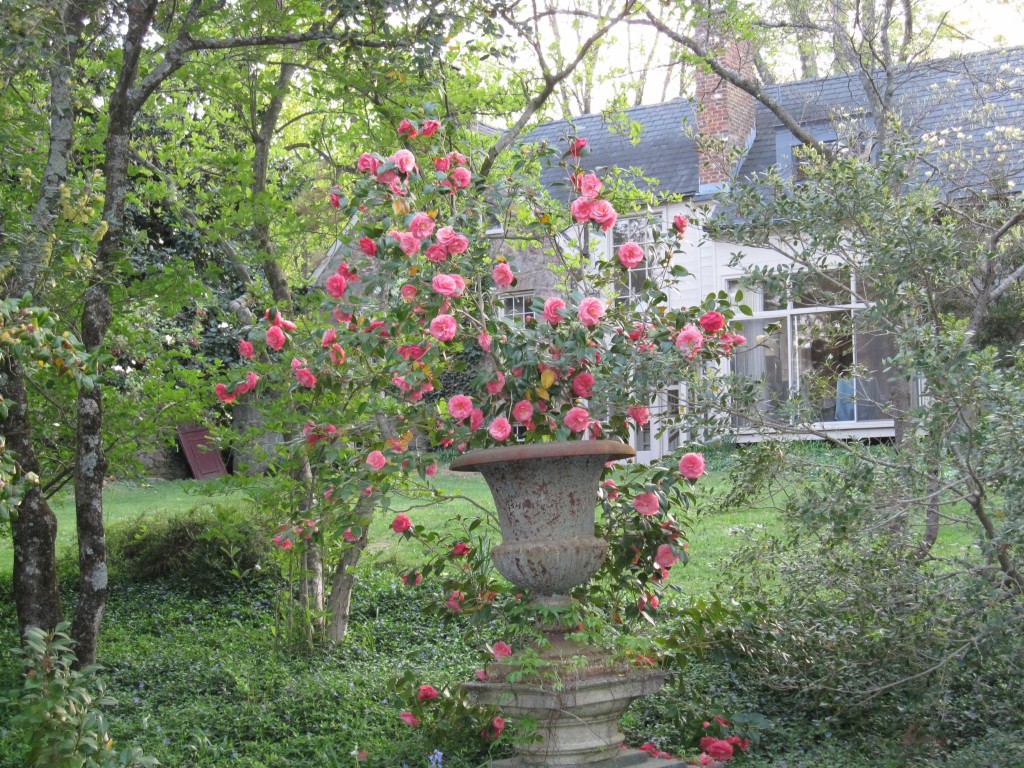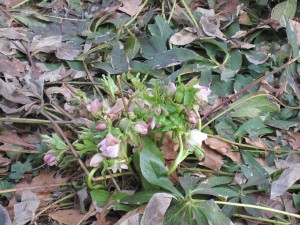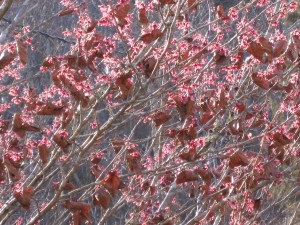Even in the icy heart of winter flowers bloom. Look for my upcoming column on Camellias in the February C-ville Abode www.c-ville.com .
Hellebores are showing their leathery stamina now. I understand why some people dislike the common orientalis and niger varieties in all their coarse fecundity. But they’ll freeze right down to the ground and thaw out like troopers. Many new hybrids have showier flowers and the deer don’t eat them so what’s not to like? Always consult Cole Burrell on Hellebores.
This morning in the biting sunny cold I walked through the east Pavilion gardens at the University, beautifully maintained with magnificent American hollies, magnolias, and boxwood. Many flitting birds and fat squirrels among the shrubbery (hawks have been spied on grounds) which is faithful to native plants with attention to Jefferson’s preferences, although he did not leave any specific ornamental plan for the spaces inside the serpentine walls he designed.
The lower garden of Pavilion VI, with the ancient spire from Oxford’s Merton College in the center, has a thick old patch of Hellebores in the far corner. I visit it for the varied collection of early spring bulbs, but nary a one was in sight on this cold winter morning.
No need to worry if bulb foliage gets frozen. Most bulbs are native to the Mediterranean and Asia and are genetically wired to withstand low temperatures. If a sudden freeze threatens early flowers, pick them for the house.
At home our witchhazel ‘Diane’ came into bloom last week, bursting forth in her full ruby glory outside my office window. When the sun sets behind her she glimmers in a fuzzy halo of pink. The occasional crinkled coppery leaves are a counterpoint in texture and color. She freezes just fine.



